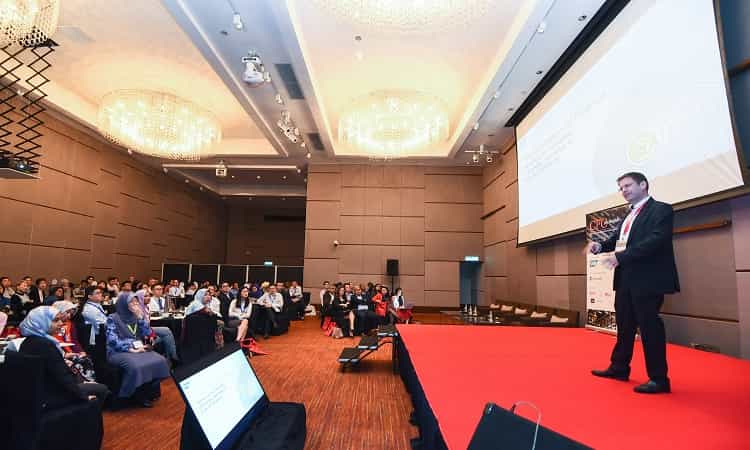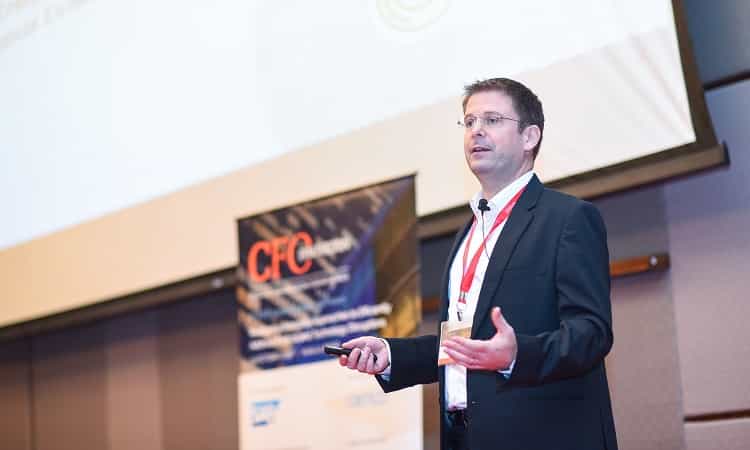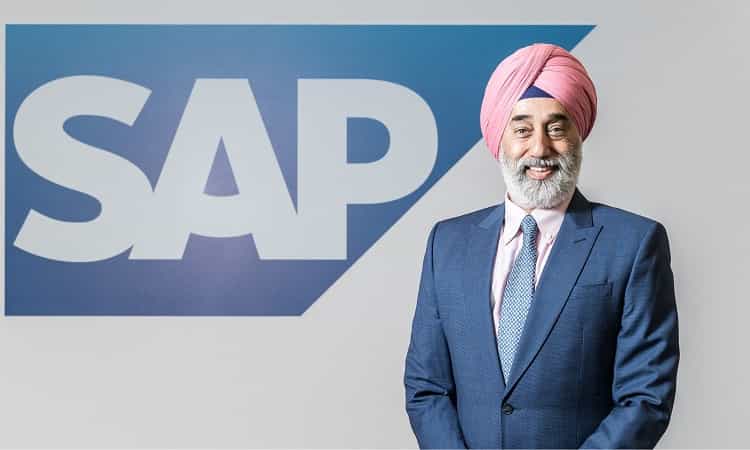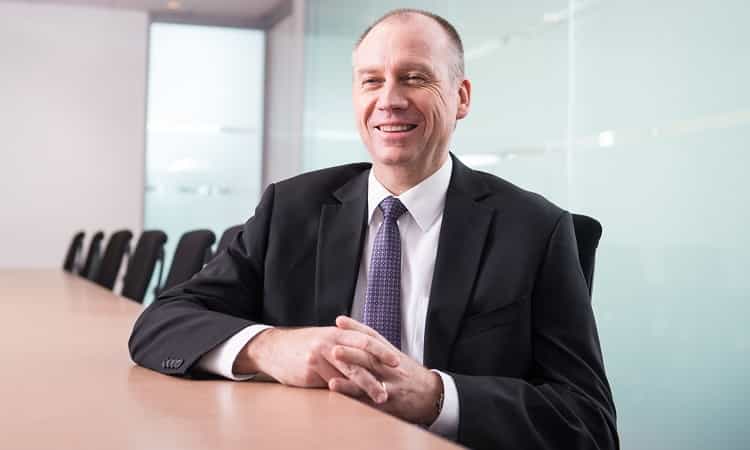SAP chief financial officer (Southeast Asia) Thomas Zipperle believes that emerging technologies can be harnessed for financial excellence. In his keynote address at the 6th Chief Financial Officer (CFO) Innovation Malaysia Forum held in Kuala Lumpur recently, Zipperle explained that, in recent years, there had been a great deal of change in the finance space.
“During my first 10 – 15 years at SAP, which is a technology company, in terms of finance, not a lot has changed. Accounting standards are basically the same; the tools are almost the same. But over the past 5 years, a lot of things had changed. Technology is so rapidly developing, and we need to be prepared for that,” he told a packed auditorium.
According to Zipperle, there are 5 major digital trends that CFOs ought to be aware of and prepare for. These are cloud computing, cybersecurity, supercomputing, hyperconnectivity, and smart technologies.
Speaking briefly on cloud computing, Zipperle noted that the advent of cloud computing has brought about push innovations, leading on to faster adoption of technologies.
“We do not have upgrade cycles that after every 6-7 years we need to re-implement our enterprise resource planning (ERP) system; it will be a constant update, and we might not feel it has been updated – we simply get it.”
Cybersecurity is key for finance organisations, Zipperle pointed out. “There are tools now that can detect fraud within your systems on a real-time, live basis. It goes through your system; it constantly checks to see if there’s any suspicious activity going on that you need to be alert to.”
“We have so much data in our finance systems, but I don’t think that anybody can say that they’ve been using more than 10%,” Zipperle said, with regards to supercomputing. “How can we leverage this to support the business with predictive analytics? Usually, when we talk about forecasts, we ask the sales team. And I think you share my experience as well; these are highly-political forecasts. How can we support with data-based, fact-based reports that do not rely on biases?”
In terms of hyperconnectivity, Zipperle has seen more and more systems getting integrated within his organisation, but also with customers and vendors.
“Bringing everybody on one platform helps to get fully integrated and have end-to-end process integration.” Hyperconnectivity has also made crowdfunded financing and peer-to-peer lending platforms feasible, which CFOs might wish to leverage in order to secure financing.
According to Zipperle, machine learning will have a huge impact on finance, as will artificial intelligence (AI) and process integration.
“While Internet of Things (IoT) might not be very relevant to finance, it will be very relevant to our businesses, because it will radically change business models. We need to be part of the discussions with the business so that we can leverage whatever they’re doing with IoT in our own systems as well.”
These trends bring their own challenges with them, with CFOs required to deal with a new reality for financial excellence.
“Big data explodes, network mobility is increasing – people want to have access from everywhere; Millennials want to work from their smartphones and approve workflows on iPhones and iPads on the go. Adoption of innovations need to speed up significantly. Millennials grew up with all these things; in order to attract that talent, we need to provide them the right environment,” he said.
Zipperle also shared some use cases for artificial intelligence (AI) and machine learning as it pertained to CFO functions, including the use of chatbot analytics in digital financial assistants, setting up an intelligent Delegation of Authority (DoA), and the creation of unbiased forecasts using predictive analytics.
In particular, he highlighted SAP’s use of its own solutions in using machine learning to automate invoice clearance as part of an integrated procurement system. “The challenge is that the customers pay multiple invoices in one payment, they don’t specify the invoice number, they might pay in a different currency, they might overpay or underpay.”
Accordingly, SAP implemented automated invoice clearance earlier this year. Using SAP Cash Application, a machine learning tool, SAP is able to auto-clear routine, ‘easy’ invoices. More ambiguous invoice payments are matched as best as possible and flagged for accounts receivable personnel to review, alongside confidence levels.
“If it’s above 90%, we auto-clear; no questions asked. If it’s below 80%, a popup notifies the accounts receivable clerk, and if it makes sense, it’s approved. Today, we are able to auto-clear about 40% of payments; 30% requires someone to confirm the clearance – nobody has to sit down with a calculator.”
Zipperle acknowledges that 30% of payments still need human oversight, as the machine might not be able to pick it up. “But it’s constantly learning, and we’re seeing that with that learning, that 30% being constantly reduced. This is really a tool that showcases how machine learning can help us in our finance organisation, especially in shared services environments.” SAP Cash Application has freed up the accounts receivable team to concentrate on meeting other challenges, such as resolving issues and speeding up payments.
In Zipperle’s opinion, digitalising finance starts with centralising processes. “Leveraging technology can only work if you have standardised processes, because it’s just so much faster to get the benefits if you can rely on one standard process. So shared services and centres of excellence are very important. SAP has moved all of our core accounting processes into a global shared services organisation. Then you integrate systems; you integrate your procurement system with your ERP system, your supply chain system, and ultimately you automate.”
Zipperle also highlighted the fact that digital transformation comes hand-in-hand with people transformation. “We have to transform our people from being accountants to being stewards, to being business partners where they support the business in whatever it wants to do, to lastly being a true transformation agent, where they challenge the business to think of new ways of doing business. In SAP, we rolled out 3 years ago a training programme throughout the whole finance organisation to work on this path.”
He also outlined the importance for companies to emerge as ‘Intelligent Enterprises’, where everything and everyone is interconnected on one common platform. This comprises the 3 components of an intelligent suite, running on a digital platform, deploying and applying intelligent technologies.
SAP Concur managing director Madanjit Singh said that an Intelligent Enterprise includes three key capabilities that most organisations are already on a journey to build. They are visibility, focus and agility.
“However, intelligent technologies, such as machine learning, IoT and advanced analytics enhance their progress tremendously,” said Madanjit.
“Bringing travel, expense, and invoice management systems together is a good example of the value of the Intelligent Enterprise. No longer is data in disconnected systems; you have visibility across all spending with one view. This then frees up employees to do more meaningful work by providing insights to refine processes, ensure compliance, and stay ahead of market changes,” he added. “In other words, Intelligent Enterprises accelerate value creation.”
SAP Concur is a cloud-based solution which improves automation, integration and analytics across travel and expense processes.
“End-to-end, automated data synchronisation between SAP Concur and other business applications provides management with more visibility into employee spend,” added Madanjit.
Meanwhile, SAP Malaysia managing director Duncan Williamson said that the Intelligent Enterprise is more than just an automated business.
“The Intelligent Enterprise is the future of business,” said Williamson. “It is the future of work and visionary companies here in Malaysia, Southeast Asia and throughout the world are already embarking on their digital transformation journeys.”
“The Intelligent Enterprise serves as foundation for greater visibility, focus, and agility across organisations. We believe the opportunities are endless and we are committed to helping customers discover where they are on this journey and how we can help them reimagine their business as Intelligent Enterprises,” added Williamson.
“SAP is committed to supporting every customer to become a best-run business. Together, we help the world run better and improve people’s lives.
“Being a best-run business means being an Intelligent Enterprise. Our strategy therefore is to deliver the Intelligent Enterprise for our customers so that they can achieve their desired outcomes,” concluded Williamson.






